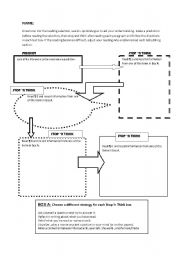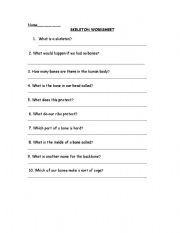Mixtures Worksheets for Elementary
Are you a teacher or parent in search of educational resources that will engage elementary students and strengthen their understanding of mixtures? Look no further! Our mixtures worksheets are designed with young learners in mind, providing a fun and interactive way to learn about this essential science topic. With clear and concise instructions, these worksheets help children grasp the concept of mixtures and identify the different components within them.
Table of Images 👆
More Other Worksheets
Kindergarten Worksheet My RoomSpanish Verb Worksheets
Cooking Vocabulary Worksheet
DNA Code Worksheet
Meiosis Worksheet Answer Key
Art Handouts and Worksheets
7 Elements of Art Worksheets
All Amendment Worksheet
Symmetry Art Worksheets
Daily Meal Planning Worksheet
What is a mixture?
A mixture is a combination of two or more substances that are not chemically bonded together, allowing them to be easily separated based on their physical properties. Each component retains its original characteristics in a mixture, and the proportions of the substances can vary. Mixtures can be homogeneous, where the components are evenly distributed, or heterogeneous, where the components are not evenly distributed.
Give an example of a mixture found in the kitchen.
One example of a mixture found in the kitchen is a salad, which typically consists of a combination of various ingredients such as lettuce, tomatoes, cucumbers, carrots, and dressing. Each component retains its individual properties and can be visually distinguished within the overall mixture.
Explain why sand and water is considered a mixture.
Sand and water are considered a mixture because they are two distinct substances physically combined. In this mixture, the individual particles of sand are not chemically bonded to the water molecules, and they can be separated by physical means such as filtration. The sand and water retain their original properties, and both substances can exist in the mixture without undergoing any chemical reactions or changes.
How are mixtures different from substances?
Mixtures are composed of two or more different substances that are physically combined and can be separated through physical means, while substances are pure and consist of only one type of particle, either an element or a compound. Mixtures retain the properties of their individual components, whereas substances have unique chemical and physical properties based on their composition. Additionally, mixtures can have variable compositions, whereas substances have fixed chemical formulas.
Name one way to separate a mixture of salt and water.
One way to separate a mixture of salt and water is through the process of evaporation. By heating the mixture, the water will evaporate, leaving behind the salt which can then be collected.
What happens when a mixture is heated?
When a mixture is heated, the individual components of the mixture may have different boiling points. As the temperature increases, the component with the lowest boiling point will vaporize first, leading to separation of the mixture into its individual components. This process is known as distillation and is commonly used to separate and purify mixtures.
Describe the process of filtration and how it is used to separate mixtures.
Filtration is a method used to separate solid particles from a liquid or gas by passing it through a barrier that only allows the fluid to pass through. The mixture is poured through a filter, which traps the solid particles while allowing the liquid or gas to pass through. This process is effective in separating mixtures based on the particle size difference between the solid and the fluid. Filtration is commonly used in various industries such as wastewater treatment, pharmaceuticals, and food processing to separate and purify substances.
Provide an example of a mixture that can be separated by magnetism.
An example of a mixture that can be separated by magnetism is a mixture of iron filings and sulfur powder. By using a magnet, the iron filings can be easily separated from the sulfur powder because iron is attracted to magnets whereas sulfur is not. Simply moving the magnet near the mixture will cause the iron filings to stick to the magnet, allowing for the separation of the two components.
Explain how oil and water form a mixture.
Oil and water form a mixture due to their physical properties. Oil is non-polar, while water is polar. This difference causes them to be immiscible in each other, meaning they do not dissolve or combine easily. When oil and water are mixed together, they separate into distinct layers due to the difference in their densities. The oil, being less dense, floats on top of the water creating a heterogeneous mixture.
Describe what happens when a mixture is stirred.
When a mixture is stirred, the components of the mixture are agitated and dispersed evenly throughout the mixture. This helps in achieving uniformity and homogeneity in the mixture by breaking up clumps or clusters of different components and promoting the interaction between them. Stirring also helps in accelerating any chemical reactions that may be taking place within the mixture by increasing the contact between reactants. Ultimately, stirring ensures that the components are thoroughly mixed and distributed, leading to a more consistent and well-integrated final product.
Have something to share?
Who is Worksheeto?
At Worksheeto, we are committed to delivering an extensive and varied portfolio of superior quality worksheets, designed to address the educational demands of students, educators, and parents.



































Comments